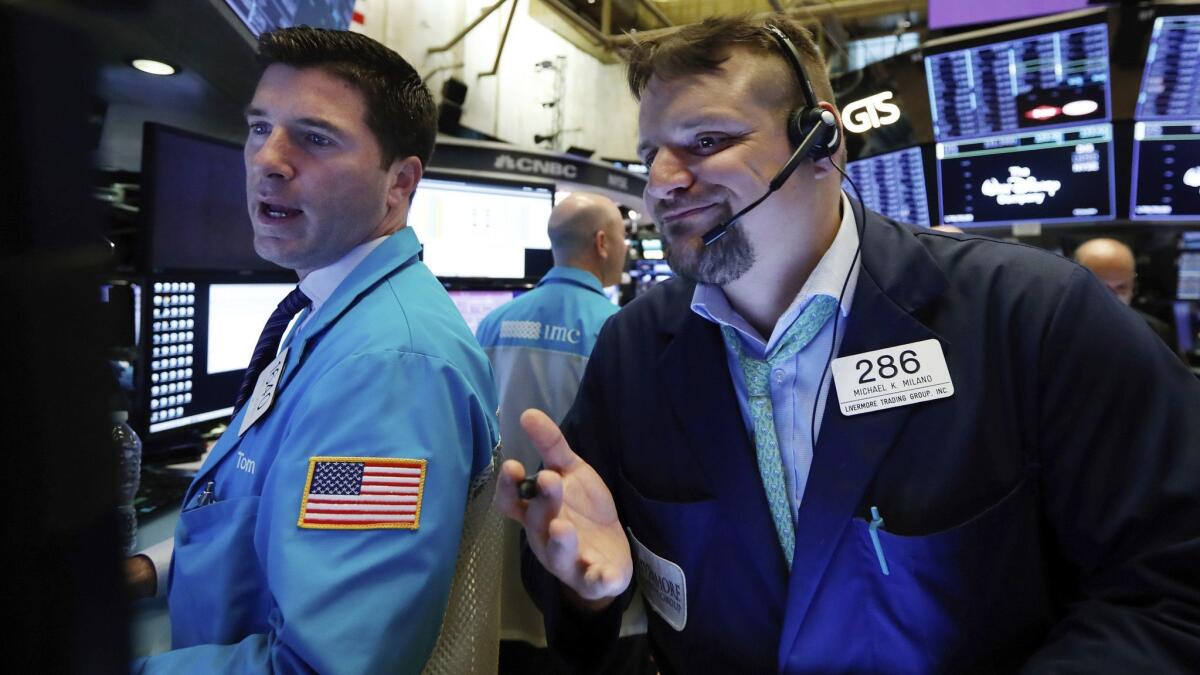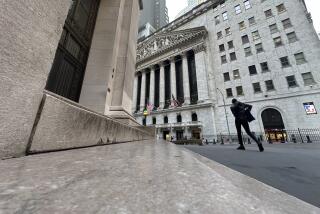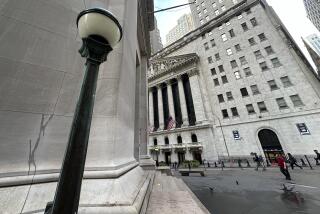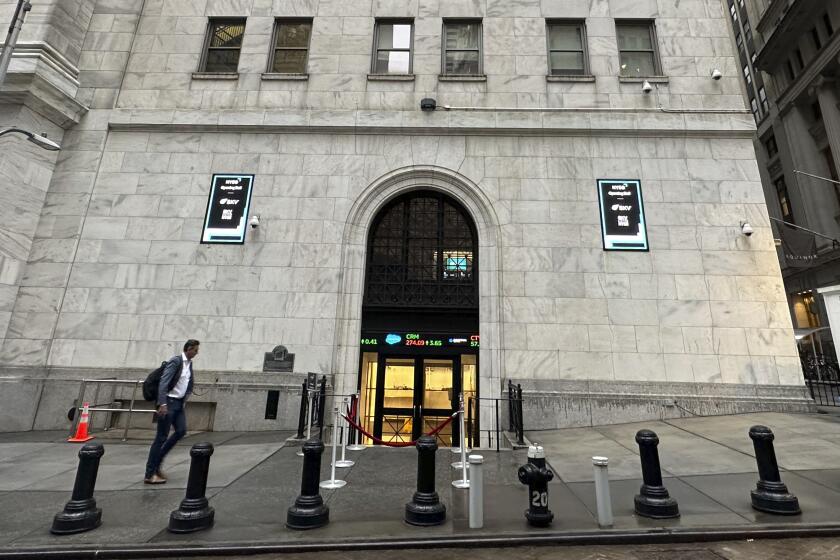Stocks rise, clawing back some of Monday’s trade-war-induced drop

Stocks climbed Tuesday and clawed back a chunk of their losses from Monday’s rout, the latest whipsaw move as investors weigh just how badly the escalating U.S.-China trade war will hurt the economy.
The day’s rally was nearly a mirror image of Monday — when the Standard & Poor’s 500 index had its worst day since early January — just not as severe: Technology companies led the way higher Tuesday after bearing the brunt of the selling on Monday, Treasury yields rose modestly and gold gave back a bit of its Monday gains.
The S&P 500 rose 22.54 points, or 0.8%, to 2,834.41. It recovered nearly a third of its loss from Monday and would now need to rise 3.9% to reach the record high it set a couple of weeks ago. The Dow Jones industrial average rose 207.06 points, or 0.8%, to 25,532.05, and the Nasdaq composite index climbed 87.47 points, or 1.1%, to 7,734.49.
Stocks are still lower than they were last week, before China pledged to raise tariffs on U.S. goods. Stocks also remain lower than they were May 5, when President Trump announced that the United States would raise tariffs on Chinese goods.
Tuesday’s rally came after another round of morning Trump tweets about trade. “When the time is right we will make a deal with China,” he said, and cited his “unlimited” respect for and friendship with China’s leader.
Investors are looking for a “place of equilibrium,” said Mark Hackett, chief of investment research for Nationwide Investment Management.
“There’s really not a lot of news driving the rally,” he said. “It feels like an attempted recovery that may not have legs.”
In the meantime, any further hints of resolution on the trade dispute — or tweet storms — could drive markets into their next swing.
“We’re not counting on a full resolution,” said John Lynch, chief investment strategist at LPL Financial. “But we’re looking for a path to progress.”
The worries about trade have shattered a remarkably steady rise for stocks. As 2019 began, investors increasingly bet that a U.S.-China trade deal would come together, and the Federal Reserve said it would take a pause in raising interest rates. Those factors helped the S&P 500 rocket to its best start to a year in decades.
If the trade dispute gets worse, or if it lasts longer than many expect, it could hurt confidence among businesses and households. If that in turn drives spending lower, it would lead to lower economic growth and corporate profits.
On Tuesday, at least, such worries eased. The VIX index, which is known as Wall Street’s “fear gauge” that measures how much traders are paying to protect themselves from upcoming price swings for stocks, dropped 12.1%. On Monday it leaped 28.1%.
The VIX index remains higher than it has been for much of the last five years, but fear is considerably lower than during the market sell-off late last year, which was sparked by worries about a possible recession.
Investors also returned Tuesday to technology-sector stocks. Tech firms may have the most to lose from a protracted U.S.-China trade war because many of their customers and suppliers are abroad. Tech stocks in the S&P 500 jumped 1.6%, with semiconductor companies making particularly big gains. On Monday, tech stocks took the market’s heaviest losses.
On the flip side was the utility sector, which was the only one of the S&P 500’s 11 sectors to fall Tuesday. A day earlier, when all the fear in the market put an alluring spotlight on utilities’ steady profits and dividends, it was the only S&P 500 sector to manage a gain.
Other investments seen as safe harbors also dropped, such as U.S. government bonds. When a bond’s price falls, its yield rises. The yield on the 10-year Treasury rose to 2.41% from 2.40%. It was at 2.45% at the end of last week.
Gold is another investment that tends to falter when investors are feeling more optimistic. On Tuesday it fell $5.50 to settle at $1,296.30 an ounce.
Take-Two Interactive climbed 3.5% after the publisher of “Grand Theft Auto” and other video games posted quarterly results that beat Wall Street forecasts.
Ralph Lauren slid 4.3% after the upscale clothing company reported a dip in revenue from its key North America market.
Silver rose 4 cents to $14.81 an ounce. Copper rose a penny to $2.73 a pound.
Benchmark U.S. oil rose 74 cents to settle at $61.78 a barrel. Brent crude, the international standard, rose $1.01 to $71.24 a barrel.
Natural gas rose 4 cents to $2.66 per 1,000 cubic feet. Heating oil rose 2 cents to $2.06 a gallon. Wholesale gasoline rose a penny to $1.98 a gallon.
The dollar rose to 109.64 yen from 109.34 yen. The euro slipped to $1.1207 from $1.1231. The British pound fell to $1.2905 from $1.2965.
More to Read
Inside the business of entertainment
The Wide Shot brings you news, analysis and insights on everything from streaming wars to production — and what it all means for the future.
You may occasionally receive promotional content from the Los Angeles Times.










